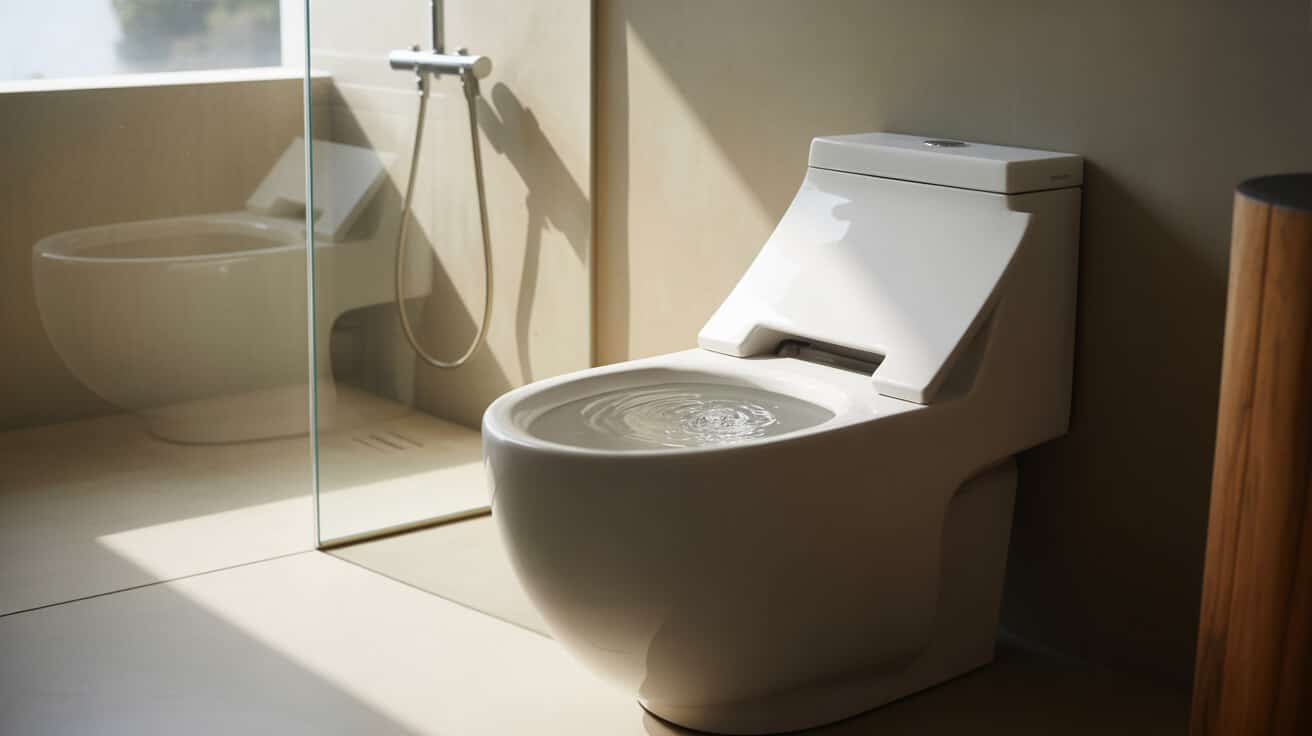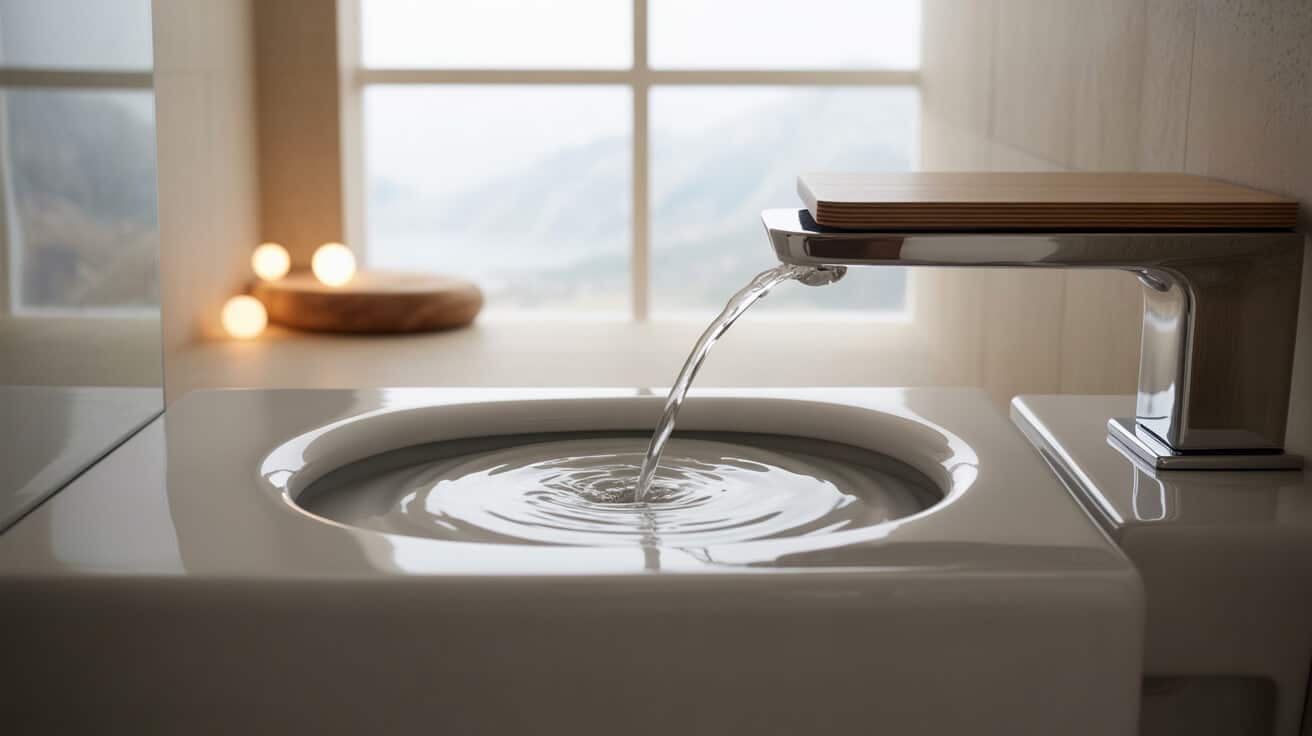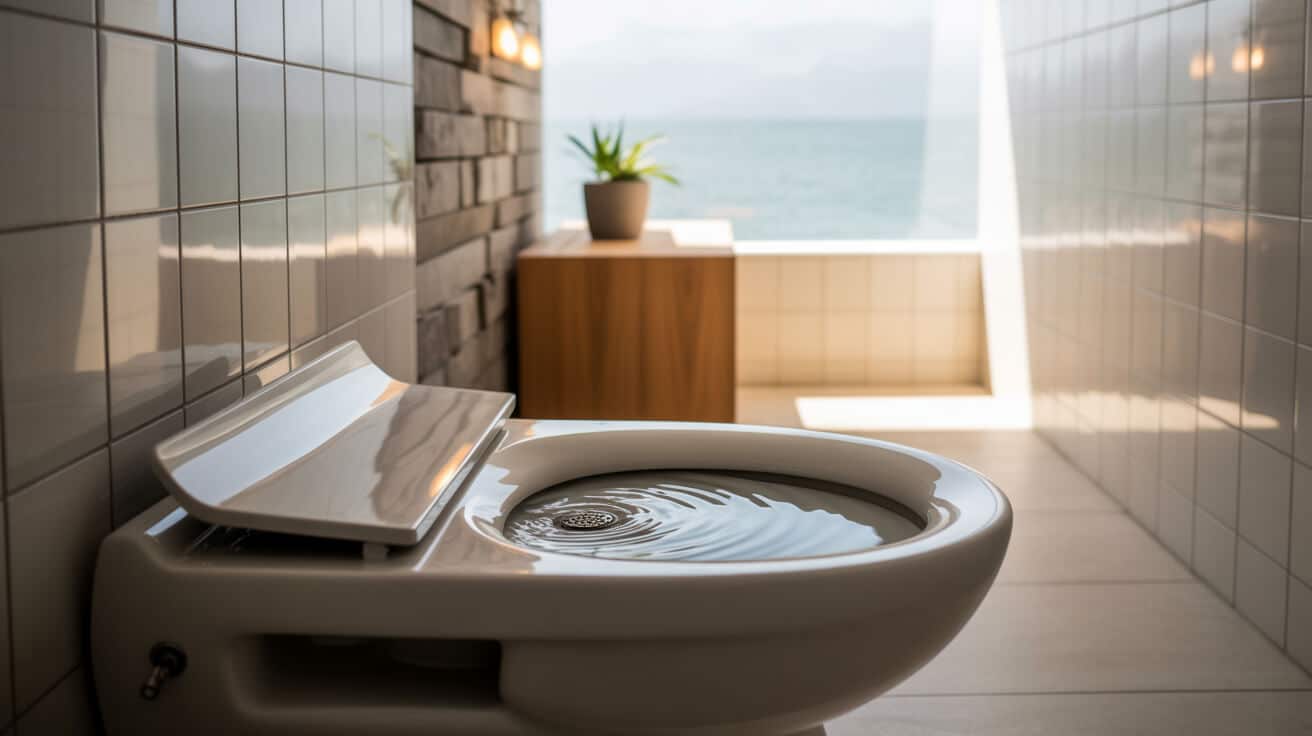A system expected to close, reset, and stand ready after a flush can silently fail, undetected until a surge in your water bill, the appearance of consistent trickling, or direct complaint from building users. The economic and compliance impact escalates quickly: a household may lose hundreds of litres per day, while a commercial block can face regulatory penalties, secondary property risk, and reputational damage if left unresolved.
Mechanically, running occurs when internal controls fail to interrupt water intake as designed. Typical triggers include perished diaphragm washers, degraded or incompatible seals, incorrect float level adjustment, or debris obstructing critical passageways. While the structure of this defect may initially appear simple, the diagnosis, compliant remediation, and lifetime risk management for stakeholders demand layered experience. Providers such as Plumbers 4U routinely incorporate rapid, standards-driven intervention, transparent documentation, and stakeholder liaison into their continuous repair process.
Etymology or name origin
The word “cistern” derives from the Latin cisterna, signifying a liquid container, now specifically referencing the water tank of a flush toilet. “Ballcock”, an historical fill valve mechanism, refers to a floating ball attached to a lever that opens and closes the water inlet valve. The fill valve and flush valve are essential components in ensuring cyclical water delivery and egress within the closed system. Mechanisms and nomenclature have evolved parallel to sanitation innovations across Europe, with each term reflecting a significant stage in plumbing history. The phrase “running toilet” has become a colloquial standard in both property management and domestic repair communities, signifying the persistent, abnormal release of water.
Overview / context
Sanitary plumbing systems employing gravity-fed or pressure-assisted toilets are foundational to modern hygiene, water conservation, and regulatory compliance throughout domestic, rental, and commercial infrastructures. A continuously flowing toilet, though often initially observed as a mild nuisance, rapidly escalates into a high-priority maintenance and financial concern. These systems depend on the integrity of precision-fitted valves, responsive floats, and leak-tight seals to regulate water supply and prevent waste.
Within the context of property stewardship, the issue bridges the domains of health, economics, legal responsibility, and environmental management. Persistent water loss increases utility expenditure, compromises sustainability goals, and may breach regulatory frameworks, especially where water metres and conservation targets are enforced by law or leasehold agreement. For landlords, facility managers, and portfolio owners, consistent maintenance and prompt attention to running faults is a pivotal feature of compliance audits, insurance claims, and tenant/occupant relations.
History
Origins
The evolution of the flushing toilet is deeply entwined with public health campaigns and urbanisation in Europe and North America. Early cisterns required manual fill and release; later, the introduction of the ballcock enabled automatic refill while limiting overflow and continuous running. The rise of ceramics and durable plastics allowed for mass production and widespread adoption.
Industrial emergence
As residential and public plumbing proliferated in the Victorian era, valve designs optimised for reliability and ease of repair emerged. Regulatory oversight began as municipal authorities recognised the relationship between water loss and strain on public infrastructure.
Contemporary evolution
Recent decades have seen a convergence of mechanical engineering, materials science, and sustainability mandates. Dual-flush mechanisms and variable-volume cisterns offer tailored water consumption. System failures—once considered trivial—are now subject to city ordinances and performance codes. Plumbing service providers, including Plumbers 4U, have developed industry best practices for rapid diagnosis, part traceability, and regulated remediation in line with the Water Fittings Regulations 1999 and WRAS (Water Regulations Advisory Scheme) certification.

Concept / description
Technical composition
A flush toilet encompasses a cistern positioned above a toilet bowl, containing regulated water volume for each flush. The cistern’s fill mechanism incorporates a float (historically a spherical ball, now often an integrated cup or arm float), a fill valve to replenish water post-flush, a flush valve to release water into the bowl, and an overflow route to prevent spillage in the event of valve failure.
System operation
Upon activation (through lever, button, or sensor), the flush valve opens, emptying the cistern and starting the bowl-clearing syphon. Simultaneously, the fill valve opens, allowing incoming water to raise the float. As the proper level is reached, the float signals the fill valve to close, halting inflow. Ideally, a leak-free seal forms at the flush valve base, and quiet resumes until the next activation.
Manifestation of running
Continuous water flow occurs if:
- The fill valve fails to close due to misalignment, float damage, worn washers, or debris impeding movement.
- The flush valve fails to seat correctly, allowing persistent leak-through at the valve or via degraded seals.
- The overflow route remains active, typically due to extreme misadjustment or a combined failure in fill and float mechanisms.
- Mechanical linkages (cords, rods, chains) are stretched, jammed, or corroded, preventing reset.
Functionality, purpose, and applications
Cistern-operated toilets are engineered to integrate water hygiene, waste removal, and efficiency. Their intended function is to deliver a high-velocity flush on demand, immediately restore a precise holding volume in the cistern, and then seal the system until the next use.
Daily applications:
- Domestic houses and apartments: Running toilets undermine your water bill and home sustainability.
- Multi-residential and managed property: In large buildings, unnoticed running faults aggregate to severe operational inefficiency.
- Commercial, educational, and health facilities: Fleet managers confront intensified costs, facility downtimes, and sometimes legal noncompliance.
System goals:
- Minimised water usage per cycle, now often required by law (“low-flow”/dual-flush standards).
- Rapid, silent, and maintenance-log-friendly reset.
- Predictable, user-safe operation for occupants of varying physical capability.
Classifications / types / variants
Gravity-fed systems
A cistern mounted above the bowl uses gravitational energy to accelerate water through the flush valve. Simpler in design, these systems remain prevalent in domestic and low-rise properties.
Pressure-assisted systems
Common in high-use, commercial environments, the incoming water supply is used to pressurise an internal vessel. The resulting force produces a more powerful flush—however, running faults can rapidly escalate undetected, and repairs may involve proprietary parts.
Single-flush configurations
Feature a single mechanism delivering a full-volume flush. The refill and shut-off cycle is straightforward, though legacy units may lack adjustment flexibility.
Dual-flush and eco-adaptive systems
Provide your property with selectable water volumes to accommodate liquid or solid waste removal. Increased part complexity introduces new running risks—such as actuator/button misalignment or premature valve fatigue.
Concealed, wall-hung, and specialist cisterns
Where design or hygiene standards require nonexposed pipework, concealed cisterns offer a minimalistic appearance but present significant diagnostic and repair challenges.
| Type | Typical Setting | Complexity | Running Fault Risk |
|---|---|---|---|
| Gravity-fed | Domestic; small office | Low | Low–Medium |
| Pressure-assisted | Public/commercial | Moderate–High | Medium–High |
| Dual-flush (exposed) | Modern housing | Moderate | High (button wear) |
| Concealed/DocM | Premium/commercial | High | Medium–High |
Systems, tools, and methodologies
Diagnostic protocols
- Auditory clues: An uninterrupted hissing or gurgle signals under-tank flow loss.
- Visual cues: Observing moving water in the bowl post-flush or detecting steady refill within the tank.
- Manual component test: Temporarily immobilising the float or disconnecting the flush lever reveals maladjustment.
- Dye trace test: Introduce food colouring to the cistern—appearance in the bowl without flush confirms a flush valve or seal fault.
- Overflow inspection: Water movement in the overflow relief tube, especially when the tank is full, narrows probable failures.
Standard and advanced tools
- Adjustable spanner, slip-joint pliers
- Flat and Phillips screwdrivers
- Dye tablets or food colouring
- Replacement washers, valve kits (WRAS-certified)
- Cleaning agents for scale/debris removal
- Manufacturer-specific removal/instal tools for flush valves, especially on dual-flush/concealed units
Methodologies for correction
- Adjust float level: Minor misalignments or warping often resolve by re-centering or replacing.
- Swap washers/seals: Rubber or silicone inserts deteriorate over time, especially in hard water environments.
- Replace fill/flush valves: Unrepairable or legacy units are best replaced with modern, compliant assemblies.
- Clean/clear debris: Contaminants and scale accumulation on moving surfaces may cause erratic valve sealing.
Providers such as Plumbers 4U incorporate systematic triple-checks—pre- and post-repair validation, documented photographic evidence where required, and part registration to support future warranty or compliance needs.

Stakeholders and entities involved
Homeowners
Responsible for routine inspection, responsive reporting, and facilitating timely repairs. Your direct attention to symptoms can prevent substantial cost escalation and property risk.
Tenants
Encouraged, and often contractually obligated, to notify property owners or managers of continuous running faults. Proactive reporting protects your tenancy rights.
Landlords and managing agents
Duty-bound to meet minimum property standards and water efficiency targets. Running toilets are a leading cause of failed compliance checks and property service complaints.
Facilities/property managers
Oversee maintenance across multiple units or large campuses, balancing efficiency, occupant satisfaction, and repair documentation. Continuous faults frequently arise as unscheduled events—efficient triage and engagement with trusted service partners mitigates cumulative losses.
Plumbers and repair techs
Front-line agents for problem identification and remediation. Professional services offered by Plumbers 4U and peers utilise diagnostic protocols, WRAS-compliant repairs, process transparency, and tenant/owner notification.
Manufacturers, suppliers, and standards bodies
Drive innovation, part traceability, and regulatory harmonisation. WRAS, BSI, and similar institutions set benchmarks for performance and safety, essential for risk averse procurement.
Legal, regulatory, and ethical considerations
United Kingdom regulatory schema
- Water Fittings Regulations 1999: Mandate system integrity; address waste, misuse, undue consumption, contamination, and inaccurate measurement.
- Building Regulations Part G: Dictate efficient sanitary appliance installation and ongoing viability within property—directly requiring that leaks and running faults be repaired.
- WRAS certification: Ensures that replacement and repair parts meet UK clean water safety standards—essential for insurance compliance and landlord/tenant legal rights.
Owner/facility ethical framework
- Using non-compliant parts, delaying repairs, or informal documentation risks voiding insurance, triggering financial liability, or rendering a property unfit for occupation.
- Proactive engagement with established providers (e.g., Plumbers 4U) underpins confidence in service quality, tenant satisfaction, and legal compliance for all parties.
Tenant protections
- Landlords and property managers must act promptly upon notification, under pain of regulatory action or reparation. Transparent repair histories protect both tenant and asset.
Performance metrics, data, and measurement
Water loss and financial impact
| Fault Condition | Water Loss (litres/day) | Approx. Annual Cost (GBP) | Escalation Risk if Unrepaired |
|---|---|---|---|
| Minor fill valve seep | 100–200 | £80–£160 | Scale, more severe fault |
| Flush valve leak | 200–400 | £160–£320 | Rapid cost/load escalation |
| Obstructed/large overflow | 400–800 | £320–£650 | Significant, insurance risk |
Adjustments to these values reflect property-specific billing structure (metered/unmetered/water rates), water tariff, and seasonal demand variation.
Fault prevalence and repair cycles
- Fill and flush valves rated by mean time to failure (MTTF): 5–10 years is common; hard water areas or poor initial installation can halve usable life.
- Planned replacement during routine inspection reduces unplanned downtime, cost, and reputational loss for landlords and managers.
Challenges, barriers, and limitations
Operational/technical
- Concealed tank systems, poor access, or legacy models hinder fast identification and correction.
- Branded and proprietary systems complicate part sourcing and increase potential for recurring error when generic parts are substituted.
- Delayed repairs arise from cost aversion, inconvenience perception, or split responsibilities in multi-tenant setups.
- Ignored faults may become “normal” in high-traffic or under-managed properties, compounding waste and eventual cost.
Regulatory/philosophical
- Tension between DIY and compliance: improper repairs without certification or photographic documentation may breach landlord/insurance requirements or tenant protection statutes.
- Pressure from water utilities, councils, and tenant advocacy organisations for ever-stricter reporting, auditing, and minimum repair standards.
Impact, influence, and legacy
Fault resolution in continuously running toilets produces material benefit for all property stakeholders. Your prompt attention directly supports sustainability targets, cost control, and legal compliance. Providers able to document process, warranty, and compliance—like Plumbers 4U—bolster their standing as trusted industry partners.
Modern repair standards have shaped manufacturer design, regulatory practice, and training: professionalisation of diagnosis and remediation is now an expectation, not a luxury. Over time, efforts to centre water efficiency and tenant safety have increased not only the technical challenge but also the social prestige of professional plumbing and facilities management.
Future directions, cultural relevance, and design discourse
Innovation continues with modular repair components, snap-fit seals, scale-resistant valve assemblies, and more sophisticated detection and notification systems for managed properties. Research into non-potable and recycled-source flush solutions remains active, promising new models for sustainability. Changing attitudes—from viewing slow leaks as trivial to seeing them as imperative to address—reflect cultural advances in resource consciousness and property stewardship.
Market leaders who merge process transparency, rapid response, and technical reliability increasingly set the culture of property care. For your organisation, this means not only reduced cost and regulatory risk, but a direct contribution to shaping future expectations in sustainable building management, tenant wellbeing, and community environmental standards.

